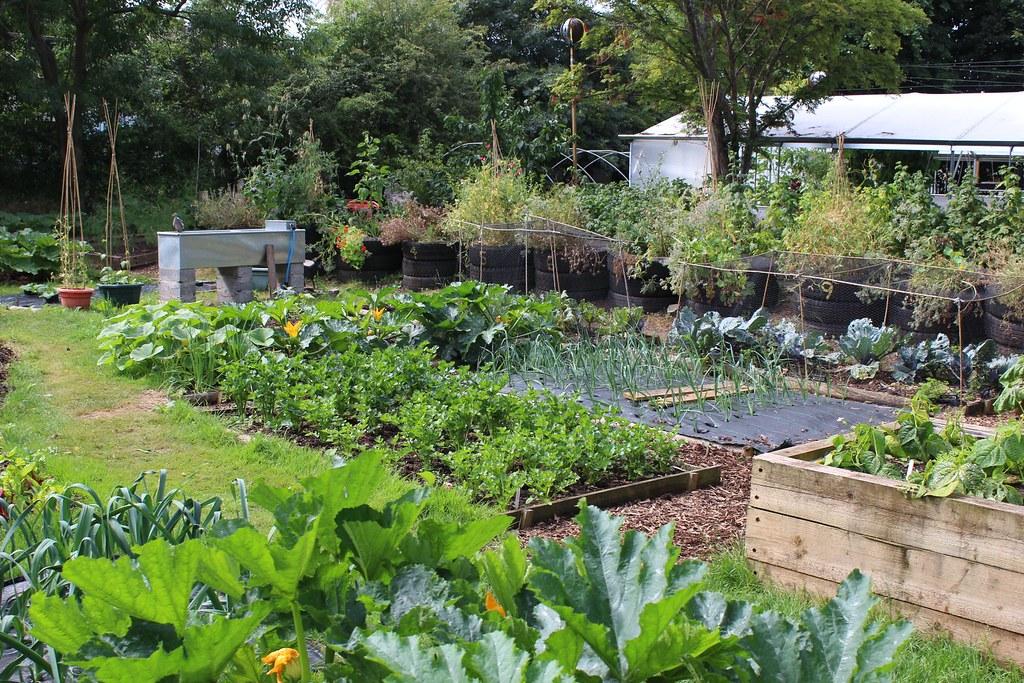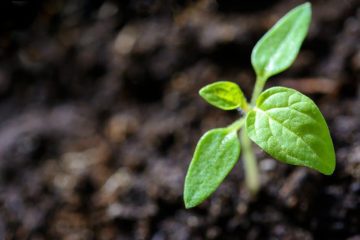In the intricate tapestry of nature, plant ecology serves as the vibrant thread weaving together the delicate balance of ecosystems worldwide. Exploring plant ecology examples unveils a mesmerizing array of interconnected relationships, resilience, and adaptation strategies that showcase the awe-inspiring beauty and functionality of the botanical world. Let’s embark on a journey through the fascinating realm of plant ecology, where every leaf, flower, and root tells a story of survival, cooperation, and harmonious coexistence.
Table of Contents
- Understanding Plant Adaptations in Extreme Environments
- Exploring Mutualistic Relationships Between Plants and Pollinators
- Analyzing the Impact of Climate Change on Plant Communities
- Implementing Sustainable Gardening Practices to Support Plant Biodiversity
- Q&A
- The Conclusion
Understanding Plant Adaptations in Extreme Environments
In the realm of plant ecology, the astounding adaptations of flora in extreme environments never cease to amaze. Picture a barren desert landscape where life seemingly struggles to exist. Yet, resilient succulents like the Saguaro Cactus thrive by storing water in their stems to endure prolonged droughts. These majestic giants can tower over the arid terrain, showcasing nature’s ingenious ways of survival.
Venture to the icy realms of the Arctic, and you’ll encounter plants like the Arctic Moss that have mastered the art of cold tolerance. These tiny yet tenacious mosses form dense carpets on the frozen ground, insulating themselves against harsh temperatures while providing crucial habitats for other Arctic creatures. Through intricate adaptations like freeze tolerance and efficient nutrient absorption, these plant species exemplify nature’s boundless creativity in conquering extreme environments.
| Plant | Adaptation |
|---|---|
| **Welwitschia Mirabilis** | Long taproot for water extraction |
| **Barrel Cactus** | Expandable stems for water storage |

Exploring Mutualistic Relationships Between Plants and Pollinators
In the lush tapestry of nature, the intricate dance between plants and their pollinators unveils remarkable symbiotic relationships. Delicate blooms beckon fluttering visitors, forging bonds vital for the survival and propagation of both parties. **From aromatic blossoms to vibrant petals, plants have evolved an array of strategies to attract their winged allies**, offering nectar, shelter, or even specific markings as guiding beacons.
Pollinators, ranging from buzzing bees to graceful butterflies, dutifully traverse from bloom to bloom, inadvertently transferring pollen and perpetuating the cycle of life. Through this intricate choreography, both partners reap the benefits of this mutualistic alliance, ensuring genetic diversity and ecosystem stability. As we delve deeper into the realm of plant ecology, these examples of harmonious coexistence shine as testaments to the interconnected web of life.
| Plant Pollinator | Relationship |
|---|---|
| Sunflower | Bees |
| Orchids | Moths |
| Lavender | Butterflies |

Analyzing the Impact of Climate Change on Plant Communities
In the realm of plant ecology, the intricate dance between climate change and plant communities unveils a mesmerizing narrative of adaptation and resilience. As temperatures shift and precipitation patterns evolve, plant species embark on a delicate journey of survival, each responding uniquely to the altering environmental cues. From arid deserts to lush rainforests, the impact of climate change weaves a tapestry of challenges and opportunities for plant ecosystems worldwide.
Exploring the nuances of this ecological symphony reveals a spectrum of plant responses to the changing climate:
- Migration: Witness the graceful migration of plant populations towards more favorable habitats, seeking refuge in areas where conditions align with their biological needs.
- Phenological Shifts: Delve into the mesmerizing world of phenological shifts, where plants adjust their life cycle events such as flowering and fruiting to match the evolving seasonal rhythms.
- Species Interactions: Uncover the intricate web of interactions between plant species and their environment, showcasing the interconnectedness that defines the resilience of plant communities in the face of a changing climate.
- Genetic Adaptation: Marvel at the genetic adaptations taking place within plant populations, sculpting new traits that enable survival in a world undergoing rapid transformation.
- Biodiversity Hotspots: Explore the fragile beauty of biodiversity hotspots, where a rich tapestry of plant life faces the dual challenges of climate change and human impact.
| Climate Change Impact | Plant Community Response |
|---|---|
| Increased Temperatures | Shift in distribution patterns |
| Altered Precipitation | Changes in species composition |
| Extreme Weather Events | Adaptive strategies |

Implementing Sustainable Gardening Practices to Support Plant Biodiversity
Incorporating sustainable gardening practices is crucial for nurturing a diverse ecosystem in your garden. By adopting eco-friendly methods, you can create a harmonious environment that supports a wide range of plant species. One effective way to promote biodiversity is by implementing **companion planting**, where mutually beneficial plants are grown together to naturally repel pests and enhance soil fertility.
Furthermore, incorporating rainwater harvesting systems can help reduce water usage and provide a natural water source for your plants, contributing to the overall health of your garden. By mulching with organic materials such as leaves or compost, you can conserve moisture, suppress weeds, and improve soil structure, creating an optimal habitat for various plant species to thrive. Embracing these sustainable gardening techniques can not only benefit your garden but also contribute to the conservation of plant biodiversity in your local ecosystem.
| Benefits of Sustainable Gardening Practices: |
|---|
| 1. Promotes biodiversity |
| 2. Reduces water usage |
| 3. Enhances soil fertility |
Q&A
Q: What are some fascinating examples of plant ecology at work in nature?
A: One intriguing example of plant ecology in action is mutualism among plants and pollinators. This symbiotic relationship is essential for the survival and reproduction of many plant species, as pollinators like bees and butterflies help transfer pollen between flowers, enabling fertilization and the production of seeds.
Q: How do plants adapt to their environments in terms of ecology?
A: Plants showcase remarkable adaptations to thrive in diverse environments. For instance, desert plants have evolved succulent leaves to store water, while tropical rainforest plants have developed large leaves to capture sunlight in the dense canopy. These adaptations reflect the intricate interplay between plants and their habitats.
Q: Can you provide an example of plant competition within an ecosystem?
A: Competition for resources, such as sunlight, nutrients, and water, is common among plants in ecosystems. An example is the struggle for space and sunlight in a forest, where taller trees can overshadow smaller plants, leading to intense competition for access to essential resources.
Q: How do invasive plant species impact native ecosystems from an ecological perspective?
A: Invasive plant species can have detrimental effects on native ecosystems by outcompeting indigenous plants for resources, altering habitat structures, and disrupting ecological processes. Their rapid spread can threaten biodiversity and ecological balance, underscoring the importance of managing invasive species to preserve native plant communities.
Q: What role do plant communities play in ecosystem stability?
A: Plant communities play a crucial role in maintaining ecosystem stability by providing food, shelter, and habitat for a diverse range of organisms. Through processes like photosynthesis, nutrient cycling, and soil stabilization, plants contribute to the overall resilience and functioning of ecosystems, highlighting their significance in the web of life.
The Conclusion
As we delve into the intricate world of plant ecology examples, it becomes evident that nature’s symphony is composed of countless fascinating melodies. From the resilience of succulents in arid regions to the delicate balance of flora and fauna in tropical rainforests, the beauty and complexity of plant ecology never cease to amaze. By understanding these examples, we gain a deeper appreciation for the interconnectedness of all living organisms and the vital role that plants play in sustaining life on our planet. So, next time you take a stroll through a garden or hike in the wilderness, remember to marvel at the remarkable stories unfolding right beneath your feet, in the intricate tapestry of plant ecology. Stay curious, stay connected, and keep exploring the wonders of the botanical world around you.



0 Comments